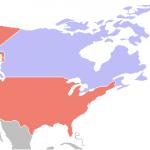UNICEF: U.S. kids worse off than many of their Western counterparts

The report, which compares kids in 29 Western countries, measures well-being across five metrics: material well-being, health and safety, behaviors and risks, housing and environment, as well as education. It ranks the United States in the bottom third on all five measures of well-being and particularly low on education and poverty. The United States is joined at the bottom by “emerging” European economies, while the Scandinavian countries and the Netherlands come out on top. The report notes that this latter group of countries tends to spend far more per capita on social welfare programs.
The countries with the best reported child well-being tend to invest in strong social safety nets. Norway, Iceland and Sweden sink nearly 7 percent of their GDP, according to an OECD report, into education. Countries such as Estonia, Latvia and Lithuania, which until the ‘90s had GDPs per capita of less than $5,000, have been able to put less money into such services. Though U.S. GDP per capita was more than $48,000 in 2012, that money is not spread evenly cross the unusually large U.S. population.
As we noted earlier, one of the report’s more alarming findings for the United States is the degree to which income inequality has increased the population of children who grow up in relative poverty, meaning that America’s famously abundant wealth does not equally benefit all children. Economists rate the U.S. economy as one of the most unequal in the Western world.
The low U.S. rating, then, does not mean that all American children are worse educated, less healthy and less well-off than all children in, for example, Greece and Slovakia. After all, many American kids are doing great. But the report, just as worryingly, means that significant numbers of American children are so much worse off than the average Greek or Slovakian child as to bring the overall U.S. average beneath those other, relatively less wealthy and developed countries.
Here’s a chart showing the rankings, overall and across the five key metrics, for all 29 countries: http://www.washingtonpost.com/blogs/worldviews/files/2013/04/uncief-cha…
Still, the United States did do well on some comparative metrics. American kids get more exercise than almost any others studied in the report, but they’re still, by far, the most overweight. (Chalk that up to American calorie consumption, which is also one of the world’s highest.) American kids also are the least likely to drink alcohol — a finding that matches long-standing alcohol consumption patterns of American adults. According to the World Health Organization, Americans ages 15 and up have consumed far less alcohol than their counterparts abroad for decades.
Meanwhile, Canadian children smoke the most marijuana, with more than one in four reporting they’d lit up in the past year — a period when Canada continued its national debate on the country’s cannabis laws.
Here’s something that might surprise you: kids in high-achieving Finland attend preschool less than anyone else, which seems to buck research linking preschool to later educational and economic success. But, as the report explains, that statistic is somewhat misleading: preschool begins later in Finland than it does elsewhere, which throws off the numbers.
Finally, there are some interesting, if unpleasant, hints on how Europe’s recent economic crises could impact youth there. In Spain, Italy and Ireland, more than 10 percent of children ages 15 to 19 are not enrolled in education, employment or training — a frightening figure that might reflect post-recession unemployment numbers and which could, per UNICEF, augur “mental health problems, drug abuse, involvement in crime, and long-term unemployment and welfare dependence” in the future.
Some of those effects could be playing out in Spain already. More than half of the surveyed Spanish children said they’d been in a physical fight within the past year, a huge 15 percent jump from UNICEF’s 2001 survey. Greece reported a similar jump in the past decade. Both countries have suffered in the European financial crisis.
As the report notes, these types of statistics are interesting less as a snapshot of the present than a predictor of the future.
“At the heart of the case to be made is the fact that childhood is … a time in which future patterns and pathways of health and well-being are being laid down and in which disruption can have lifelong consequences,” the report concludes. “Protecting the years of childhood is therefore essential both for the well-being of those who are children today and for the well-being of the societies of tomorrow.”
© The Washington Post Company
